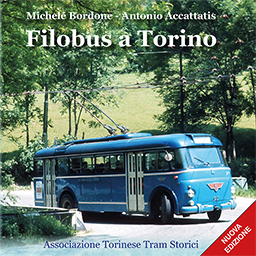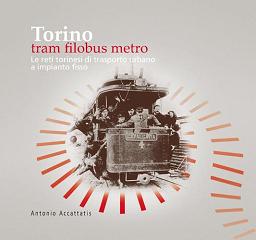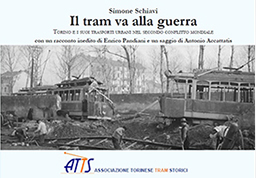Trams in Turin
Tram, Trolleybus and Underground in Turin
A long history about pubblic transport networks in Turin

NEWS: Updated the table and the map of European tram networks.
Over 140 years ago the first tracks were set for the first horse-drawn
streetcar line in Turin, which connected Piazza Castello with the
barrier of Nizza, today's Piazza Carducci.
Four books tell this history 140
years long: "Linee tranviarie a Torino",
focused on the evolution of the tramway network from Sbt to Gtt; "Torino
Tram Filobus Metro" which, in addition to the history of the
tramways, extends its scope to trolleybuses and subway, with a wide
photographic documentation; "Filobus a
Torino" which tells in detail the evolution of the trolleybus
network in Turin; and last "Il tram va alla guerra", concerning the history of tranway network, hit by war bombing, in thee framework of life in Turin during World War II.
Since last decades of nineteenth century and until first half of last century, the expansion of
the tram network, that arrived to cover the whole city territory, was
almost continuous, at the beginning through the action of three
private companies in competition with each other (Sbt, Stt and Saeai)
and then thanks to the initiative of the Municipality with the Atm.
At the same time the suburban tramway network was built, connecting Turin with the neighboring towns as Moncalieri, Venaria or Chivasso, but also with far-off towns, as Pinerolo and Saluzzo. During the first years of the twentieth century, Turin, among the first cities in the world, tested a vehicle which in the capital of Piedmont would never have been a great success: the trolleybus.
After World War II, the small trolleybus network knew a short-lived period of expansion, while new bus service links led to the permanent closure of the suburban tramway network. Also the urban tram network was widely reduced until the late sixties, when it seemed that also in Turin, as in most other Italian cities, trams were to be replaced by buses. The tram network was saved, perhaps, by the oil crisis of 1973, not so much for reasons of substance (hydroelectric power covered only a small percentage of the electricity needs of the country), but because for the first time the society perceived the possible limitations of a continuous development.
At the same time the suburban tramway network was built, connecting Turin with the neighboring towns as Moncalieri, Venaria or Chivasso, but also with far-off towns, as Pinerolo and Saluzzo. During the first years of the twentieth century, Turin, among the first cities in the world, tested a vehicle which in the capital of Piedmont would never have been a great success: the trolleybus.
After World War II, the small trolleybus network knew a short-lived period of expansion, while new bus service links led to the permanent closure of the suburban tramway network. Also the urban tram network was widely reduced until the late sixties, when it seemed that also in Turin, as in most other Italian cities, trams were to be replaced by buses. The tram network was saved, perhaps, by the oil crisis of 1973, not so much for reasons of substance (hydroelectric power covered only a small percentage of the electricity needs of the country), but because for the first time the society perceived the possible limitations of a continuous development.
In this context, the tram was no
longer the vehicle tied to the past, but a choice that could still be
valid, even under the ecological aspect, in cities permeated by smog.
The eighties saw the complete redesign of public transport network and the final closing of what remained of the trolleybus network. The new network was put in service between many difficulties and the planned revival of the tram network really did not happen.
The only exception concerned the new route 3, connecting the hill residential area with the district of Vallette built in the sixties, at the time of maximum expansion of the city. During last years we have seen lights and shadows on the tram network: the number of lines has been further reduced (now we have eight routes, some of which moreover limited), but route 4 has been modernized and extended to Mirafiori and Falchera districts; forty years after first projects, during the 2006 Winter Olympics games in Turin, the underground line was at last inaugurated, initially between the town of Collegno and Porta Susa rail station, then extended, first to Porta Nuova rail station and next to Lingotto fair complex .
The eighties saw the complete redesign of public transport network and the final closing of what remained of the trolleybus network. The new network was put in service between many difficulties and the planned revival of the tram network really did not happen.
The only exception concerned the new route 3, connecting the hill residential area with the district of Vallette built in the sixties, at the time of maximum expansion of the city. During last years we have seen lights and shadows on the tram network: the number of lines has been further reduced (now we have eight routes, some of which moreover limited), but route 4 has been modernized and extended to Mirafiori and Falchera districts; forty years after first projects, during the 2006 Winter Olympics games in Turin, the underground line was at last inaugurated, initially between the town of Collegno and Porta Susa rail station, then extended, first to Porta Nuova rail station and next to Lingotto fair complex .



